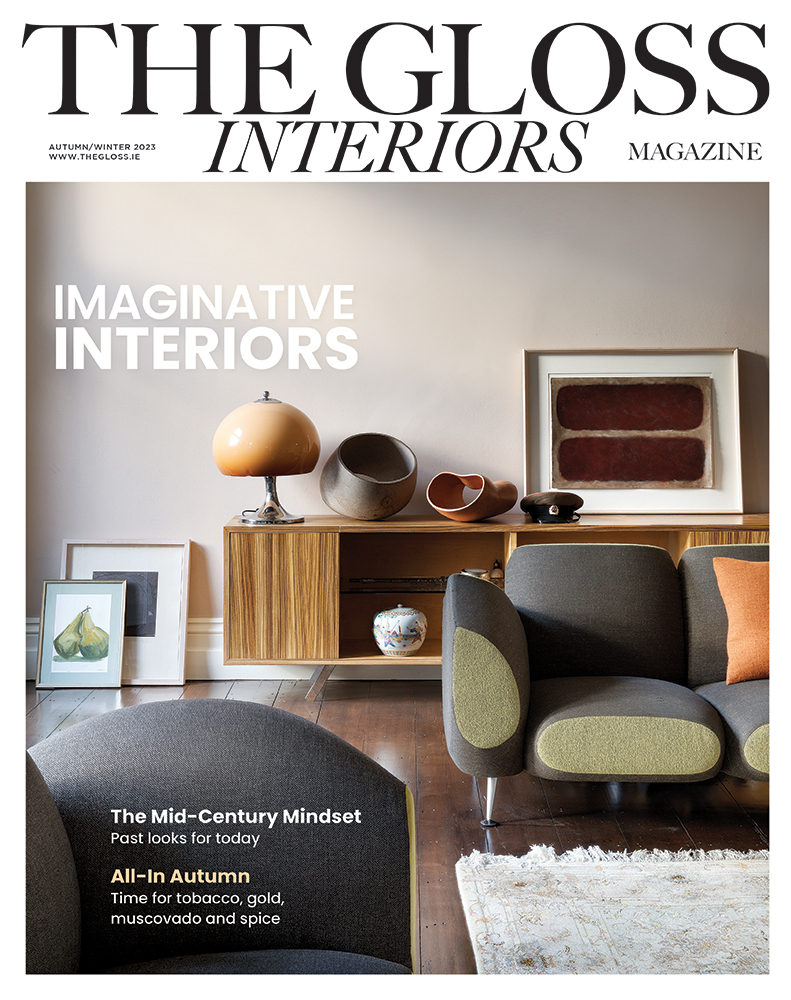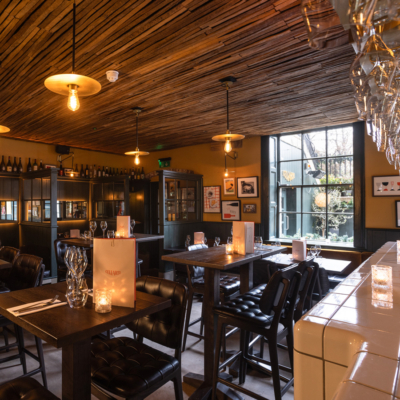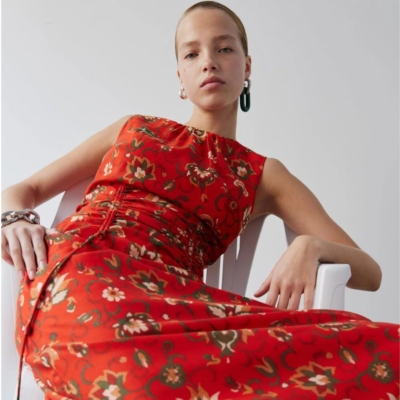Yotam Ottolenghi has transformed the way we prepare and share food, creating feasts for the eyes with colour and texture. His house and garden, with its easy, airy vibe, is the breezy backdrop for his own entertaining …
It’s because of Yotam Ottolenghi that sumac, za’atar, preserved lemons, pomegranate molasses and rose harissa found their way onto our supermarket shelves and into our spice cupboards, and because of Ottolenghi that dinner, when you consult one of his six cookbooks, is served family-style on platters and includes more pomegranate seeds and pistachios than you ever thought you’d eat at one sitting. Of all the chefs of the last two decades, the Israeli has been the greatest influence on how we eat at home, his sharing feasts an exercise in gorgeous presentation as well as interesting (often clashing) flavours and textures … vibrant orange carrots with snow white whipped ricotta, roast vegetables and meats seasoned with aromatic spices, glistening with seeds and sauces, vibrant fruits and herbs. His influence looks set to endure.
Ottolenghi fever (where entire meals were slavishly reproduced) has been replaced by fervour, where we all have our favourites – those griddled aubergines, a salad of caramelised oranges and feta, giant pillowy pastel-coloured meringues – to weave into dinner. Ottolenghi’s new book Flavour, is due this October. While we wait, we operate from Simple, the book he wrote after some close friends took him to task for the complexity of the recipes in his previous book, Plenty and Plenty More. Simple’s recipes have a shorter list of ingredients and are easy to put together. SIMPLE is actually a code to the recipes, each marked by a letter. S refers to “short on time,” L to “lazy day dishes”. “S and L are for daily cooking, and P as well, for “pantry”. On the other hand, the M, make ahead, is for dinner-party food and weekend brunch-type food.”
Ottolenghi entertains every second weekend at the London home he shares with his Northern Irish husband Karl Allen, a law graduate and former British Airways flight attendant, and a collector of vintage 1950s antiques, and their two sons. “Pretty, respectable, and bourgeois” is how Ottolenghi happily describes the house. It has five bedrooms, a garden, and a proper kitchen. “Meals are very informal,” he explains. “Everything is put out for people to help themselves: big bowls and platters, the food arriving at the table whenever it is ready.”
Allen decorated the house. “Karl has a great eye and chooses everything for the house. I try not to get involved in his department. It’s not a precious home,” Ottolenghi says. “But it was important to us that it be very beautiful.” The Georgian terraced house near London’s Regent’s Park is fresh, airy and colourful, with painted floorboards, contemporary art on the walls and a mix of modern and vintage furniture. There is a garden, where hydrangeas and peonies bloom in summer, with a swing and a slide for their two boys.
The relaxed, welcoming vibe of the house echoes Ottolenghi’s approach to food which he says, is informed by his early years in Israel. “The whole idea of sharing, eating together in a particular way, is part of our DNA,” he says. Ottolenghi restaurants feature communal tables, another trend for which he can take credit. “My instinct is to bring people together, because I grew up in a place that is very fractured and the reality can be awful.”
“My kind of cooking is not super-technical,” he says. “I travel and read a lot, but the best learning experiences come from cooking with people around me, from seeing what they actually eat.” Lunch or dinner is served at the ten-foot tree-trunk table which was shipped from Israel. “It was more trouble to get it into the house than to get it all the way from Israel,” says Ottolenghi. A window had to be removed and a small crane hired to lift it. But it was worth it, providing as it does a naturally knotty canvas for the exuberance and abundance of his food.
Occasionally Middle Eastern fare gives way to something more traditional. “Karl actually cooks more than I do,” he says, “more homely stuff like shepherd’s pie. He’s good. I’ve published a few of his recipes and the kids love his food.”
Photographed by PAUL RAESIDE/OTTO

The lushly planted garden has space for his two sons to play and a terrace for dining outdoors.
Ottolenghi’s cookbook collection includes books by Tamasin Day-Lewis, Diana Henry and Julia Child, Peter Gordon and Sarah Raven, as well as several by Darina Allen.


Yotam Ottolenghi at home in Camden in London. The Georgian house is furnished with a mix of modern and vintage furniture.

Multi-coloured Eames chairs surround the tree-trunk dining table, which came from Israel and had to be lifted into the house with a small crane after a window was removed. The vase is filled with peonies and hydrangeas from the garden.

Kitchen shelving featuring more cookbooks and tableware. Dessert books reflect Ottolenghi’s original training as a pastry chef.

The living room features a 1950s sofa upholstered in a Designer’s Guild jade velvet and a 1960s Italian chandelier; the vintage chairs, beni ourain rug and vintage shoe lasts were bought on eBay.
The Georgian terraced house near London’s Regent’s Park is fresh, airy and colourful, with painted floorboards, contemporary art on the walls and a mix of modern and vintage furniture.


Their north London home was decorated by Ottolenghi’s husband Karl Allen, who collects vintage 1950s antiques.
LOVETHEGLOSS.IE?
Sign up to our MAILING LIST now for a roundup of the latest fashion, beauty, interiors and entertaining news from THE GLOSS MAGAZINE’s daily dispatches.









